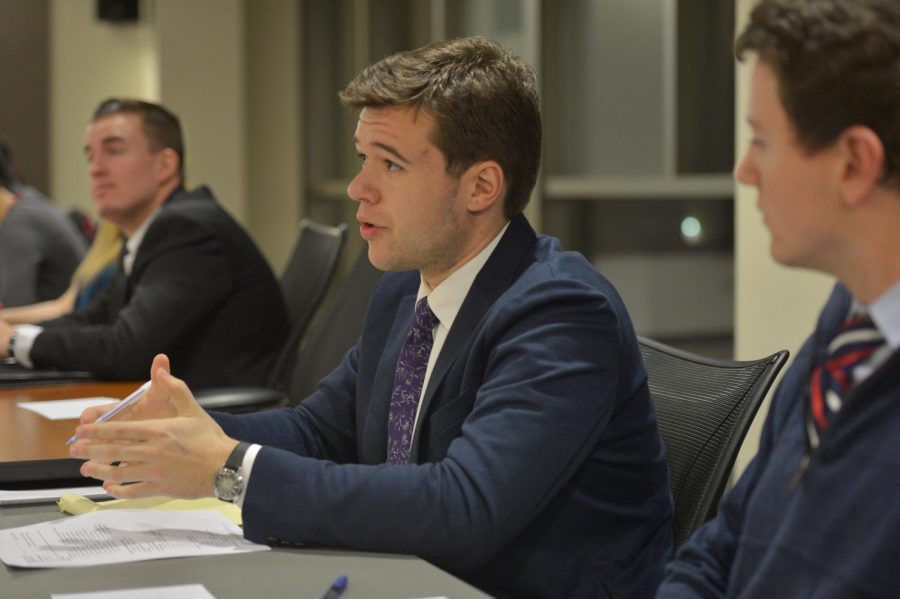Lawmakers consider revising S&A fee restrictions
Current law limits raises to student fees at tuition rate increases
DES MARKS | DAILY EVERGREEN FILE
Former ASWSU Sen. Matthew Morrow is lobbying to ease restrictions on S&A fee rates.
January 31, 2018
State legislators are considering a bill to separate Services and Activities fees — which pay for campus resources such as the Women’s Resource Center and the CUB — from the rise and fall of tuition rates.
Current state law limits the amount students can increase their S&A fees to whatever percentage tuition increased that year. The WSU Board of Regents votes on the fees proposed by student-run S&A committees from each campus. For the past several years, tuition was frozen by the state Legislature. This year’s state budget allowed WSU to increase its tuition by 2.2 percent.
Matthew Morrow, WSU Pullman director of legislative affairs, said a lack of control over student fees can negatively impact students when costs like the minimum wage increase and building maintenance arise.
“That’s really rough on a lot of student bodies that want to have the freedom to decide what their fees go to and how much they increase in a given year,” he said.
Rep. Melanie Stambaugh, R-Puyallup, who sponsored the bill, originally proposed completely separating tuition and fee amounts. But after some legislators expressed concerns about colleges using fees to bring up the cost of attendance, the bill was amended to cap any S&A fees increases at 4 percent.
“There are multiple sort of stop gaps to make sure these S&A fees increases are warranted,” she said. “Those stop gaps provide plenty of accountability to make sure these dollars are going to go for the best purpose on the campus.”
Stambaugh said college demographics have changed dramatically in the last few years, and limiting what students agree to pay in fees to tuition rates hurts their abilities to have local control over the services available.
ASWSU Spokane President Alec Sisneros said the Spokane campus has a much higher graduate student and upperclassman population than the other campuses, so most of their funding goes to programing, not services. He said their campus does not have a student union building like the Pullman campus, and only one dining option. They would like to spend student fees on increasing their population-specific needs, like childcare, or increase their funds for academic-related travel.
Shannon Kozlovich, director of legislative affairs for ASWSU Spokane, said the college’s inability to control its own fees has had a serious impact on the campus. When budgeting last year, the campus’ student fee board opted to charge 5.5 percent, though this was scrapped after the state Legislature’s budget plan only allowed WSU to increase its tuition by 2.2 percent, without including any language that specifically separated fees.
Kozlovich and Sisneros said capping fees at 4 percent was not ideal, but it could be an improvement from past years.
“Anything is better than the current system if it allows us to get more money and provide it for our students,” Sisneros said. “Being capped at undergraduate tuition when we’re primarily a graduate and professional program is already strangling enough. If we could go up to 4 percent, that would be a big improvement.”
Sisneros said WSU Spokane students currently pay about $286 in S&A fees each semester. WSU Pullman students pay about $274, but they also pay fees for buildings and programs falling under the committee, such as a Health & Wellness fee, a CUB fee, a recreation fee and a transit fee.
Morrow said he interprets a decision to give more control of fees to students as the Legislature following through on promises they made when putting fees in the hands of student committees in the first place.
“The students control the committee,” Morrow said. “We want to make sure that when [they gave] us that control, that they’re living up to their word and that we can make financial decisions for ourselves.”










